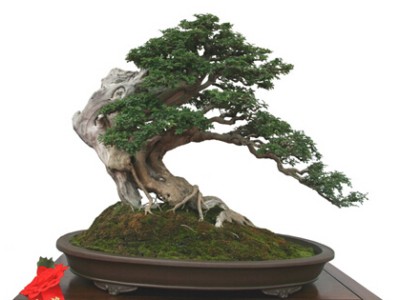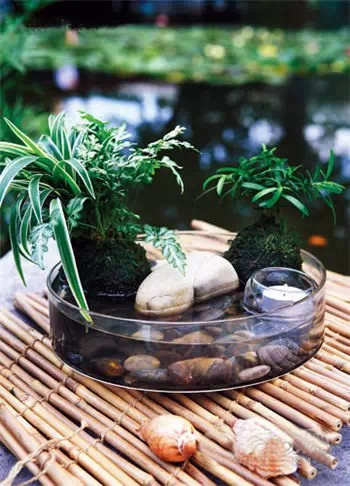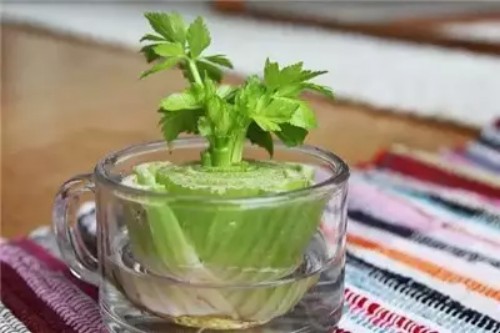The method of making juniper bonsai
Juniper, also known as Sabina vulgaris, is a kind of evergreen tree of the cypress family. Because it can be used for ornamental throughout the four seasons, it has relatively high ornamental value and is widely used in landscape design. It is a popular tree species. Although the landscape application of juniper is the most common application, because of its beautiful tree shape, it can even be used to make bonsai.

Although the bonsai application of juniper is rare compared with garden application, it is not absent, and it is also very beautiful, which can effectively improve the quality of the room and fengshui, so it is very suitable for room display.
First, draw materials
It is appropriate to dig up old cypress stumps in the mountains before the trees germinate and thaw in early spring. After mining, the billet must be "raised" for a certain period of time, and then processed in the basin when the root system develops and the old stem produces new fir leaves. When the main stem grows to a certain thickness, it can also be pruned and made into bonsai, whose branches have great plasticity and can be processed into various forms.
2. Upper basin
Selection of pots: juniper bonsai should use purple sand pottery or glazed pottery to set off its green branches and leaves. General curved dry type multi-use rectangular basin, direct dry type with medium-deep round basin or oval basin; cliff type should use high-deep thousand-cylinder basin.
Use soil: it is better to use sandy loam which is rich and loose and has good permeability. Family potted soil can be cultivated with mature pastoral soil or rotten leaf soil mixed with appropriate amount of sand and deaf bran ash. The old pile bonsai is best for the use of mountain soil.
Planting: the pot cultivation should be carried out from March to April, and the seedlings or old piles should bring persistent soil or complete soil balls. The basin bottom hole should be covered with tiles and filled with a layer of coarse sand to facilitate drainage.
Third, modeling
Juniper branches and leaves are dense and green all the year round. Old cypress stumps in the mountains are dug to cultivate bonsai. Through processing and modeling, the trunk is twisted, the branches and leaves are clustered, the potential is like a dragon, and the leaves are like a green cover, so that they have the characteristics of ancient cypress bonsai. The trunk of juniper and cypress is carved and twisted without revealing the marks carved by axe chisel and knife; the branches are pierced with Qiu qu without affectation. Cypress nature is strong, but the production posture is soft, strong and soft, ingenious and colorful, ancient elegant and magnificent, can attract people to win.
Juniper bonsai shape can be made into straight style, oblique dry type, curved dry type or cliff type by climbing and pruning. Branches and leaves are cut into semicircle or lamellar shape. Modeling should be carried out after autumn, usually first cut off the top tip, promote the growth of lateral branches, go strong and stay weak, go tall and stay short, control growth, make its branches and leaves plump, posture simple.
Time: 2019-05-26 Click:
- Prev

The main points of making bonsai with the theme of "Courtyard Sheng GE"
Like the feeling of being bored with you, it is not that there are endless topics to talk about together, but to enjoy the freedom that even lovers can't give. Time flows in front of my eyes, Luhua is scattered, who depends on the small stop? Where does the carved beam of Jiangyun Tower go to find the charming lady of that year? The white bone is green and the ash is long Ai Xiao.
- Next

Bonsai vegetable DIY with the combination of landscape and practicality
Bought vegetables, can not be eaten, or some rotten, like chicken ribs, tasteless food, a pity to discard, in fact, we might as well find a beautiful container to raise. Vegetables are transformed into good-looking potted plants, which is also a kind of interest in life. Celery: good quality, low price, rich aroma, old celery roots
Related
- Fuxing push coffee new agricultural production and marketing class: lack of small-scale processing plants
- Jujube rice field leisure farm deep ploughing Yilan for five years to create a space for organic food and play
- Nongyu Farm-A trial of organic papaya for brave women with advanced technology
- Four points for attention in the prevention and control of diseases and insect pests of edible fungi
- How to add nutrient solution to Edible Fungi
- Is there any good way to control edible fungus mites?
- Open Inoculation Technology of Edible Fungi
- Is there any clever way to use fertilizer for edible fungus in winter?
- What agents are used to kill the pathogens of edible fungi in the mushroom shed?
- Rapid drying of Edible Fungi

